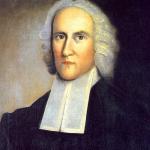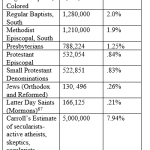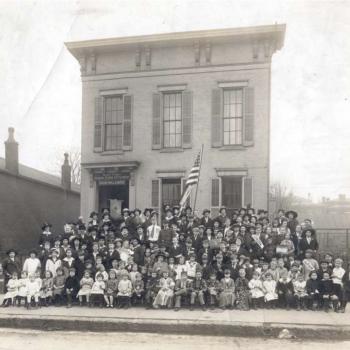Can we create a perfect world? That was the title of a talk I gave last semester for “Tipsy Orthodoxy,” a “Theology on Tap” event put on once a month for the Waco community by the Brazos Fellows, a theological postbaccalaureate program hosted by my church. The subtitle was “Lessons from American Utopias.”
When we ask whether we can create a perfect world, we can mean one of two things: Can we create a perfect entire world, which is to say all of the earth? or, Can we create a perfect subworld? Christians think the first can’t be done until the millennium or the new heavens and new earth. But we have disagreed on the second option: creating a perfect mini-world. Attempts to do that are actually instructive, because it’s taking a bunch of really sold-out people who share a common faith and giving it a go. These are known as “communitarian groups” and, more colloquially, as “utopias” or “utopian experiments.”
I have long had a fascination with utopias and their not-too-distant cousins, dystopias. This fascination began in college, when I read for one course Thomas More’s Utopia and later for another course Yevgeny Zamyatin’s We, the inspiration for both 1984 and A Brave New World. It continued in grad school when I read Lawrence Foster’s Religion and Sexuality: The Shakers, the Mormons, and the Oneida Community.
Foster observed that the 1820s through the 1840s were a peak time for American communitarian groups, more colloquially called utopian experiments. He zeroed in on Shaker communities, the Oneida community, and communitarian villages within the newly-founded Church of Jesus Christ of Latter Day Saints (colloquially known as Mormons). Other utopias like the shorter-lived Transcendentalist Brook Farm experimented with equal pay and equal work for women and men, but the other three groups went further.
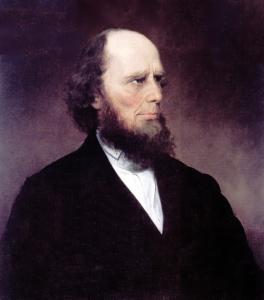
All came out of the Christian tradition but altered historic Christian ideas about marriage. All did so because of a niche interpretation of the dominant eschatology, or end-times theology, of the nineteenth century: postmillennialism. Postmillennialism taught that God’s Holy Spirit was at work in the world right now bringing it to perfection and that after that perfection was achieved (that’s the “post” part), Jesus Christ would return to earth to reign over a golden age on earth before the final battle between good and evil and the creation of the new heavens and the new earth. All three communities in some way understood God’s coming kingdom to be starting here and now in their community and radiating out from there.
And all three thought that fact affected the interpretation of a key Bible verse. Jesus told the Sadducees in the gospel of Matthew that “in the resurrection they neither marry, nor are given in marriage, but are as the angels of God in heaven.” Since all three groups thought that future type of life characterized their community now, they obviously had to change up something about marriage.
Shakers did the most literal reading of the change: they were celibate. This allowed functional equality in Shaker communities. A man and a woman co-governed each community and men and women did separate, but equally respected types of work, without the burdens of constant pregnancy for women.
The Oneida community did the most radical reading of the change: it wasn’t marriage that wouldn’t characterize the life to come, but rather exclusive marriage. In heaven, all men would be married to all women and vice versa. So that’s what the Oneida community did too, complete with sexual relations to match, accompanied by an effective form of birth control. Like the first two communities, both women and men there could work a variety of jobs that garnered equal respect.
Finally, nineteenth-century Mormons effectively believed that since there’s no marriage in heaven, you should get it on it now—in Mormon theology, a man and his plural wives would all be elevated to the same level of heaven together, and having multiple wives was the way to be elevated higher. (Mormons ended polygamy in 1890.) Contrary to what we might expect, Mormon women worked outside the home more than your typical Protestant woman of that era: communal childraising freed them to do so. They also got the vote earlier.
I didn’t expect to find that my subsequent research into women’s higher education would intersect with my side project on utopias, but perhaps I should have. Full collegiate education for women was seen by some as a utopian fantasy. Until it happened, at Oberlin Collegiate Institute (later Oberlin College), in 1837. And, strikingly, the town of Oberlin, which contained the college, was itself a pseudo-communitarian “sending city on a hill”: a model Christian community for the rest of the world to copy, with a college to serve as a training ground for missionaries and ministers who would more directly carry the Christian message–Oberlin style–beyond the confines of the Ohio settlement.
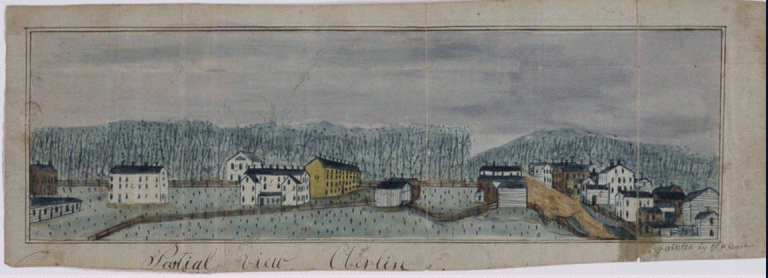
Oberlin’s founders, John Shipherd & Philo Stewart were inspired by some European communal Christian groups characterized by frugality to create one in the American West as an effective way to convince Christians to live genuinely holy lives. (The West was seen as a godless wasteland in need of this sort of thing.) The community consisted of a collection of families draw to this vision who agreed to eat and live simply, worship together, and cooperate on a wide panoply of reform movements including abolitionism, temperance, and moral reform (anti-prostitution advocacy). Oberlin Collegiate Institute would then export those values.
Oberlin pushed the boundaries of women’s higher education because of a philosophy I call “evangelical pragmatism.” The psychology of evangelical pragmatism worked like this: God’s project of getting people saved and restoring the world to perfection was the single most important thing, so we should use any and every moral means to promote it. Evangelical pragmatism was interested in whatever worked to accomplish these ends and not so interested in mores as distinct from morals. If a social more got in the way of this goal, they pitched it.
One of the biggest social mores concerned what women could and couldn’t do. But employing women in spreading the gospel and reforming the nation literally doubled the workforce of people doing that, so providing women the best possible education so that they could serve God as well as possible was high on their list of priorities.
And this didn’t just apply to women. Evangelical pragmatists at Oberlin and elsewhere also wanted to extend education to people who otherwise couldn’t afford it and came up with a variety of creative solutions to facilitate that goal. Oberlin paid students to perform manual labor for the school. Finally, Oberlin extended those opportunities to African Americans as well, for the same reasons of maximizing the number of people maximally equipped to serve God.
Let me repeat: the first coeducational college in human history was also biracial, at a time when the possibility of interracial marriage, known as miscegenation, really freaked out the average white American. It is difficult to communicate how extraordinarily radical that was. This was evangelical pragmatism at its purest.
Orthodox Christians wanting to live in a particularly sold-out way aren’t going to attempt any of the approaches to reforming society for the better that involve the extreme modifications to sexuality of the Shakers, the Oneida Community, or the nineteenth-century Mormons. But unlike these more colorful communitarian groups, Oberlin had both theology and relations between the sexes that would be considered within the bounds of contemporary evangelicalism.
Let’s call this the “Oberlin Option,” an alternative to its more famous cousin the Benedict Option. You gather a small community of Christians in an isolated location to pursue a high level of virtue together. This virtue also involves expending time and effort on reform movements that benefit the wider world. You educate your youth and others attracted to these values in a college on site and you send out graduates to carry the vision to the rest of the nation and the world.
The nice thing about being a historian is that you have data to assess the viability of the plan.
So did the Oberlin Option work? Kind of. Oberlin attracted the committed (the place had a rep) so there was mutual encouragement to holiness and activism. And the college really did succeed in converting and consecrating large numbers and types of people and exporting its values.
At the same time, perfection, even in approximation, is elusive. The town of Oberlin ran into the same problem as its more famous “City on a Hill” predecessor, the Puritan Massachusetts Bay Colony: everything is all fine and good until you have kids. Which is to say the first generation is sold out or it would not have made an errand into the wilderness. A coherent community with effective education can retain many of the next generation—but, it seems, never all of them.
Oberlin’s reforming fire thus dwindled over time. But it accomplished far more than if it had never tried. And that was more than a little. If I’m not mistaken, it granted the first truly collegiate degrees to women anywhere ever. Utopian evangelical pragmatists opened the door that I would walk through 160 years later.


